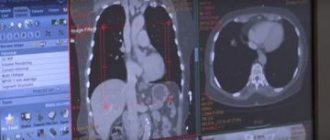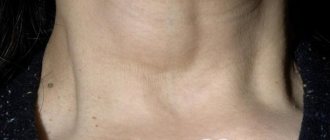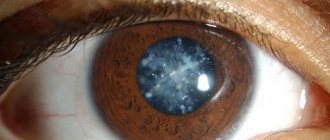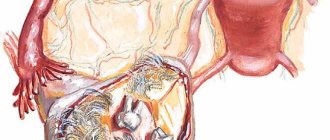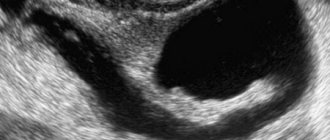Small yellowish “pimples” or Fordyce granules are an external sign of the disease. Granules scattered on the nose or lips can become a serious cosmetic problem. The shaped elements of the rash “scattered” over the labia, vaginal mucosa in women or in the scrotum area on the head of the penis (mother-of-pearl ring) are much more annoying due to itching than their size and appearance.
Fordyce granules are not pimples, but pseudoseborrheic cysts. These are formations that arise due to blockage and transformation of the sebaceous glands. It was these specific granules that John Fordyce described as the primary element of the rash. J. Fordyce and G. Fox studied the causes and manifestations of the disease and its description. Pathology is named after them. The full name of the disease is Fox-Fordyce disease.
Modern dermatology classifies the pathology as chronic dermatosis, i.e. as a classic skin disease, but not infectious. Even if the pearlescent “grains” are located on the penis or vaginal tissue, you will not infect your partner during sex.
Reasons for appearance
Doctors cannot name reliable reasons for the development of this disease. The mechanism for the appearance of pearlescent granules is associated with obstruction (blockage) or narrowing of the ducts of the sebaceous glands.
The scientists whose names gave the name to the disease found a connection between the localization of the elements of the rash and physical (somatic) ailments: endocrine, urological and even infectious. Modern scientists also adhere to this approach. Taking into account the characteristics of our body and the development of pathology, contributing factors have been identified:
- Smoking. Bad habits contribute to many diseases, including this one.
- Poor hygiene. It is much easier for Fordyce granules to develop in an environment favorable to harmful bacteria.
- Puberty period. The so-called “transitional age” activates hormonal changes in the body. These, in turn, lead to the transformation of the sebaceous glands. Once it occurs during puberty, the disease can accompany a person for life.
- Individual predisposition and physiological characteristics. It is believed that in some people the glands are located abnormally close to the surface of the skin. And any obstruction becomes noticeable to the naked eye, like a pearlescent granule.
- Injury to the glands by mechanical action.
- Endocrine pathologies affecting the adrenal glands and thyroid gland. And women also have ovaries.
Dermatosis is provoked by metabolic disorders, leading to hypersecretion of sebum (sebum) and changes in its chemical properties. And skin functions (immune and biochemical) depend on the composition of sebum. The narrowing of the duct against the background of increased sebum production leads to the appearance of pearlescent granules around the hair follicle. And this causes a toxic effect and incredible itching.
Dysfunction of the gonads is indirectly confirmed by the fact that pregnant women spontaneously improve in the last third of gestation. And on the contrary, the clinic is aggravated outside of gestation (pregnancy) in the second half of the cycle, before menstruation, just during the period of hormone violence.
Modern dermatologists consider the most common trigger for the development of Fox-Fordyce disease to be trauma resulting from laser hair removal.
Causes of seborrheic cysts
At present, it has not yet been possible to establish the exact cause of Fordyce disease. As a rule, granules appear during adolescence. A hormonal surge contributes to the formation of sebaceous gland cysts. It has been suggested that the location of the sebaceous glands too close to the surface of the epidermis contributes to the development of these neoplasms. In addition, experts identify several predisposing factors. We list the most significant of them:
- Regular smoking.
- Any pathological and physiological processes leading to blockage of the sebaceous glands.
- Hormonal imbalance.
- Metabolic disorders that increase secretion production by the skin glands.
- Failure to comply with personal hygiene rules.
Symptoms and signs
The main symptom of Fordyce's disease that worries the patient is itching (from mild to unbearable). The rashes are represented by flesh-colored nodules, similar to a cone. The elements do not merge, do not hurt and “gather” at the mouth of the glandular formations of the skin. The nodules are small, reminiscent of millet.
Figure No. 1. Mother of pearl granules
If the itching is severe, patients constantly scratch the epidermis; the following is observed on the skin:
- lichenification otherwise lichenization (thickening of the skin, strengthening of its pattern);
- bloody (hemorrhagic) crusts;
- changes in skin pigmentation;
- hair damage.
If the rash appears in the patient’s genital area, then in women the vaginal tissue is affected, and in men it is the skin of the scrotum and the foreskin of the penis. This type of pathology is divided into 2 types:
- Cosmetic defect - Fordyce granules appear in the area of the NAC (nipple + areola), armpits, around the navel or perineum - they look unsightly, and in addition are considered a sign of disruption of the endocrine glands, hormonal crises.
Figure No. 2. Fordyce granules in the SAC area
Figure No. 3. Rashes on the nose
Figure No. 4. Pearlescent “scattering” on the upper lip
- Perifollicular rash. This option causes a lot of anxiety and discomfort to patients due to disruption of sexual relations.
Figure No. 5. Rash on the skin of the penis
Fordyce disease has a long course with relapses, but sometimes resolves spontaneously.
Is relapse of the disease possible?
Sebaceous glands are an essential part of the skin. Granules can form repeatedly on the lips. To avoid relapse, you should stabilize your hormonal levels and reduce stress. You may have to contact doctors of related specialties - a gynecologist for women and an andrologist for men.
If the granules do not cause physical discomfort, then it is better not to touch them. If there is a pronounced cosmetic defect of the lips, you should consult a dermatologist.
He will examine the suspicious spot using a dermatoscope with multiple magnification, rule out the malignant nature of the neoplasm and prescribe effective treatment. Only in this case will the result please you and you will be able to get rid of Fordyce granules on your face.
The article has been reviewed by the site editors
Course of the disease by period
Medical science does not distinguish specific periods during the course of this disease. However, for your convenience, we can distinguish several stages:
- The function of the sebaceous gland is impaired.
- Nonspecific negative factors affect the patient’s body.
- The gland duct narrows, and over time the secretion completely clogs it.
As a result, pearlescent nodules are formed on the skin - Fordyce granules. Fordyce's nodes are not painful, but sometimes (especially if they are located on the genitals, such as the glans penis) they can become inflamed.
Types of Fordyce granules on the lips
Fordyce granules on the lips (which are treated if they grow very large) can appear in various forms:
- A small or large yellow-white bump on the edge of the lip.
- Single or numerous white painless nodules in the form of bumps on the red lip area.
- Granule-like cyst under the skin.
- White granular nodules that appear on the lip when it is stretched.
- White symmetrical roughness on both sides of the lip.
Sometimes granules are confused with protruding herpes. The difference is that oral herpes appears as fluid-filled blisters that burst and crust over.
Diagnostics
The granules themselves are not dangerous, especially if there is no or barely noticeable itching. But you should consult a specialist if you notice such skin signs. It's not just and not so much a matter of aesthetic correctness. Firstly, any rash is a sign of ill health. Secondly, similar skin manifestations may indicate:
- Infectious diseases (lichen planus, molluscum contagiosum).
- Pathologies combined with oncology (“shagreen skin”).
- Dermatitis or neurodermatitis.
And these diseases require serious, sometimes long-term treatment.
As a rule, the diagnosis includes only one stage - a physical examination by a specialist and a survey of the patient. In some cases, when it is externally impossible to distinguish Fordyce granules from the primary elements of the rash in other pathologies, a histological analysis is prescribed - a smear or biopsy.
If the hormonal nature of the disease is suspected, blood tests are taken for biochemistry and the patient is sent for examination to an endocrinologist. After making a diagnosis, the doctor determines the extent of the need for treatment. It depends on how much these rashes spoil the aesthetic appearance of the patient's skin.
What are Fordyce granules on the lips?
Fordyce spots are small white, yellowish skin granules that are visible on the lips, in places where sebaceous glands accumulate. They appear under the skin, are harmless and non-contagious. These sebaceous secretions are named after the American dermatologist John Addison Fordis, who first described them in medical literature.
The spots range in size from 1 to 3 mm and can be single or combined into one large group. The lips are clearly visible when stretched. The granules do not spread bacteria or viruses, so they are not classified as a disease, but only as a condition of human skin. White spots cause psychological discomfort, embarrassment of a person, and the quality of life decreases.
Treatment
Treatment and even its necessity are determined by the form of the pathology. If this is a cosmetic defect, then cosmetologists should solve the problem. If we are talking about problems with sex life, itching that causes neuroses and deep scratching that leads to tissue infection, a doctor’s intervention is mandatory!
Drug treatment
When treating Fox-Fordyce disease, the doctor faces 2 global tasks:
- Relieve the patient from itching. To combat this unpleasant symptom, antihistamines, such as Chloropyramine, are used.
- Prevent the development of neurosis, which provokes itching. For this purpose, sedatives and anxiolytics with hypnotic effects, for example, Diazepam, are prescribed.
If the hormonal nature of the disease is suspected, after consultation with an endocrinologist, the patient may be prescribed:
- Hormones.
- OK (contraceptives in tablets).
If the problem affects the sexual sphere, do not neglect consulting a urologist and sexologist.
Cosmetic therapy
If the disease has taken the form of a cosmetic defect, doctors do not provide treatment. You will be sent to a cosmetologist.
Recommended use:
- Creams or gels rich in vitamin A.
- External preparations with vitamins B, E and C.
- Dermatotropic agents (Tretinoin) are prescribed by a doctor with experience in the use of antitumor medications. Your doctor will advise you about possible side effects and weigh the risks against the benefits. After which he will decide whether to prescribe the use of such ointments
- Cortecosteroids.
- Preparations containing menthol or anesthesin.
A good effect can be obtained by including jojoba oil in the treatment in the early stages of the disease. In composition, this oil is similar to sebum, easily penetrates the Marchionini membrane (epidermal barrier, thin water-fat layer), cleanses the skin pores, and helps remove thickened sebum.
In beauty salons, several types of removal of such cysts are offered. Laser therapy or nitrogen removal is used only after an accurate diagnosis has been made.
For female patients, cosmetologists offer to solve the “beauty issue” through permanent makeup or simply to tint the pimples on the face so that they do not cause cosmetic inconvenience.
Self-removal (squeezing) is extremely contraindicated, due to the fact that there is a high probability of infection of the open wound and the formation of a hematoma.
Cosmetological removal methods are effective but not long-term. Some time after therapy, nodules form again. Despite this, surgical removal is not recommended. There are several reasons for this:
- Absence of necessity. Doctors are initially against surgical intervention where it can be done without it. Cosmetology offers enough options for eliminating this type of formation;
- Unreasonable risk. Because It is precisely thin areas of the skin that are susceptible to this disease; with surgical removal, there is a high probability of scarring.
Figure No. 6. One of the options for a rash that is best not removed. Nodules on the upper lip
It is impossible to say with confidence that pimples do not go away on their own. Medicine knows of cases where after 40 years they disappeared without any influence on them.
Features of treatment of the disease
Treatment of Fordyce granules on the lips is indicated in the presence of a significant cosmetic defect. As practice shows, after 40 years the intensity of the sebaceous glands decreases, papules resolve on their own.
The dermatologist chooses the treatment tactics. This may be drug therapy. It requires a significant amount of time, but all procedures are non-invasive and there is no risk of complications or infection with bacterial flora.
If the use of drugs is ineffective, Fordyce granules formed on the lips are removed using a laser or radio waves. Cryodestruction is not used - it is impossible to control the depth of tissue freezing.
Medication
To remove fresh Fordyce tumors with a diameter of up to 1 mm, it is recommended to use Retin-A ointment. The main component is trans-retinoic acid, jojoba oil. The drug is available in 3 concentrations.
Indications for the use of Retin-A cream for Fordyce granules on the upper or lower lip:
- acne, including closed comedones-milium;
- prevention of early aging of the skin for patients forced to spend significant time in the sun.
Trans-retinoic acid exfoliates the top layer of skin, helps dissolve sebaceous plugs in pores, and reduces the production of glandular secretions. The active components of the drug promote skin regeneration and prevent the development of scars and keloids.
Need advice from an experienced doctor?
Get a doctor's consultation online. Ask your question right now.
Ask a free question
Rules for treating Fordyce granules that appear on the lips:
- Wash and dry the skin.
- Squeeze out a small amount of the drug and apply it pointwise to the affected area of the skin.
- Do not wash or eat for 40 minutes.
- The medicine is applied once a day. Ideally before bed.
A side effect of the drug is a slight burning sensation on the skin of the lips after applying it to the granules. This does not require its cancellation. If the sensations are significant, then treatment is carried out once every 3 days.
The course of treatment is at least 1 month. Additionally, vitamin complexes and procedures to stabilize hormonal levels are indicated. To reduce the production of sebaceous gland secretions, it is recommended to prescribe physiotherapy. Darsonval has proven itself well. This will prevent the appearance of new granules on the lips and other parts of the body.
Cosmetic
You can get rid of Fordyce's disease on the lips using minimally invasive cosmetic procedures. No preliminary preparation is required, but all activities must be carried out by a doctor at a medical institution, in compliance with the rules of asepsis and antiseptics. Pain relief is local using ointments or sprays based on lidocaine.
Methods for removing Fordyce granules localized on the lips:
- Laser – treatment of the affected area with a beam of laser radiation allows you to safely remove the tumor. The device evaporates the upper layer of the dermis and the fatty lump layer by layer. The likelihood of infection when granules are removed is minimal.
- After laser treatment of Fordyce lesions, a scab forms on the lips. It is prohibited to touch or remove it yourself. Otherwise, you will get an infected wound and a scar. Correcting them is problematic even with the use of filler. After some time, the scab will come off on its own.
- The radio wave method is similar to laser destruction. But high frequency radio waves are used. After processing the granules, a crust forms, which will fall off on its own within 7–10 days.
- Cryodestruction with liquid nitrogen is not carried out; it is impossible to control the depth of freezing of granule tissues. The method is used only when other methods of removing Fordyce tumors are unavailable. Possible complications are the formation of extensive scars on the lips and keloids.
- Electrodiathermocoagulation is not performed. This is a painful method. Possible burns to healthy tissue.
Specialized wound care is not required during the rehabilitation period after removal of Fordyce granules. It is enough to follow the rules of hygiene, exclude bacterial infection of the wound, and do not try to remove the crusts yourself.
Traditional methods
Traditional methods of treatment boil down to treating nodules on the lips with various infusions, homemade ointments, and essential oils.
Safe ways to eliminate Fordyce's nodes from folk herbalists:
- add baked onions;
- lubricate with fir oil or iodine;
- propolis oil solution.
For those who are especially desperate, it is recommended to burn the granules on the lips with a hot iron. In this case, there is a high probability of burning healthy tissues, the formation of scars, cicatrices, changes in contour, and the development of inflammation.
Risk group
The maximum risk of the appearance of pearl granules is faced by adolescents in the age range of 13-17 years. During puberty, the skin of young people literally becomes shiny with fat. This is the influence of sex hormones, mainly androgens. Increased sebum production is the leading cause of the disease.
Otherwise, everyone is at risk of finding such cysts on their body. This is due to the fact that the causes of the disease are common to all age and gender groups. If we look at the statistics, the percentage of cases is divided almost equally into men and women
These may also be children, whose physiological feature is the location of the glands close to the epidermis. Adolescents during puberty. Men and women at different ages, taking into account the characteristics of the body and its hormonal levels. Considering these facts, we can conclude that people of all categories who are prone to hormonal fluctuations, have bad habits and have a hereditary predisposition are at risk of the disease.
Using the anesthetic Acriol Pro when removing Fordyce granules
Cryotherapy, laser therapy, electrocoagulation are procedures that involve discomfort for the patient, and in some cases can be painful. To avoid discomfort, it is recommended to use a local anesthetic first. These include Akriol Pro. This is a cream created on the basis of two amide anesthetics - lidocaine and prilocaine7. The two-component composition makes the drug more effective than one-component analogues26. The cost of the cream is affordable5, in addition, it can be purchased in tubes of 5, 30, 100 g.
Prevention
There is no specific prevention. Nonspecific prevention measures are traditional and well known. First of all, give up bad habits. Doctors never tire of repeating that smoking and alcoholism are the helpers of all diseases that exist. Giving up existing habits is the first preventative measure.
Of course, preventive measures are not able to affect physiological characteristics, but it is still possible to reduce the risk of manifestation as much as possible. For example, paying due attention to hygiene. For women, good advice would be to remove makeup from your face in a timely manner and not leave it on overnight. Everyone also needs to remember about “diseases of dirty hands”, which contribute to the development of a number of diseases. Children are advised to wipe their faces and hands more often, and try to protect them as much as possible from close contact with outdoor objects.
If a person is prone to or already has minor problems with the sebaceous glands, as a preventive measure, you can use folk remedies, or consult with a dermatologist in advance about the use of ointments for preventive purposes.
Try to protect delicate skin from mechanical damage, injuries and burns, as well as from contact with harmful chemical elements contained in some cosmetics, toothpastes, pens, pencils, etc.
Symptoms of Fordyce granules on the lips
The normal sebaceous glands located under the skin are not visible.
In the case of Fordyce granules, the glands are visible and have characteristic symptoms:
- They appear in the form of distinct bulges in the affected lip area.
- They are reddish, white or pale yellow in color.
- May form individual nodules or clusters.
- Their size ranges from 1 to 3 mm in diameter.
- The rashes do not bother or cause itching.
- Sometimes they spread to the surrounding skin.
- The lips become pale pink or have a yellowish tint.
- They are easily visible when the lips are stretched.
- The shape resembles small rice.
- In rare cases, they cause mild itching.
Symptoms of pathology
Seborrheic spots mainly form on the edges of the lips. Education can be single or multiple. The average size of papules is about 2 mm. The nodules are quite dense. With multiple rashes, the formations may rise slightly above the surface of the skin. The color of the granules can vary from light white to yellow.
Symptoms of Fordyce disease may manifest in each case individually. The rash may be yellow or light pink.
With the appearance of seborrheic spots on the face against the background of a cosmetic defect, complexes develop. This especially affects teenagers in adolescence, that is, during puberty. In this regard, they may try to squeeze them out, mistaking them for ordinary acne or pimples. But this should not be done under any circumstances. Firstly, the contents of the nodule do not come out completely and some of the yellow and thick liquid remains inside. Secondly, this procedure leads to the formation of wounds and pinpoint hemorrhage. Thirdly, it will not be possible to get rid of Fordyce granules in this way. When papules are squeezed out on the skin, a new rash forms over time. Therefore, such a procedure will only bring a temporary effect.
Applicable therapy
Fordyce granules respond well to treatment. However, before starting treatment, it is necessary to undergo appropriate diagnostics and differentiate the disease from other skin diseases.
Retin-A cream has proven itself well in the fight against sebaceous spots. This product is developed on an oil-water basis. The cream is well absorbed into the skin and does not leave a greasy residue. Dermatologists recommend treating rashes twice a day. Apply the cream to clean and dry skin.
Fordyce granules soften and disappear under the influence of the drug. The duration of treatment is determined by the doctor depending on the scale of the lesion. The first result becomes noticeable after 3-5 procedures. Final recovery is observed after 3-5 months.
If the doctor's recommendations are not followed, peeling, redness and swelling may occur. Retin-A is also available in a bottle in the form of a solution. In this case, the drug is applied pointwise using a cotton swab.
More radical methods of treatment include cryotherapy, electrocoagulation and laser therapy.
In the first case, papules are eliminated using liquid nitrogen. This method is painful, and scars form in place of the granules. Cryotherapy is used quite rarely today. A less traumatic procedure is electrocoagulation. The principle of the procedure is the effect of electric current on sebaceous cysts. With laser therapy, formations are burned away under the influence of a laser beam. Not a trace remains in place of the papules. The only drawback of laser removal is its high cost.
After the procedures, Fordais granules become covered with keratinized epithelium, after which they are rejected like atrophied flesh. That is, over time they disappear. It is not recommended to pick the crust, as this will lead to bleeding and scar formation. If you follow the doctors' recommendations, the healing process will be painless.
Sebaceous cysts are rarely removed surgically. This is due to the fact that the procedure is very painful and traumatic. After surgery, scars remain on the skin and the cosmetic effect is reduced to zero.
Types and localization
Forks-Fordyce papules or granules in men in the intimate area are distinguished according to the place of their formation:
Translucent nodules with a pearlescent tint “encircle” part of the organ, forming a so-called pearl necklace. It is the characteristic appearance of the neoplasms that gives them their name: “pearly papules.” A ring around the head, consisting of many identical small granules, can surround the organ with one, two or more rows of neoplasms. Sometimes they are confused with genital warts, which, unlike pearlescent papules, are a manifestation of a viral disease and are transmitted to a sexual partner through sexual contact. It is necessary to differentiate the presence of Fordyce granules from molluscum contagiosum. Contacting a urologist or venereologist is a mandatory step to exclude diseases that require urgent treatment.
Whitish or yellowish rashes on the testicles are less common than on the foreskin and head of the genital organ. Their origin is completely identical to the formations described above. Unlike pearlescent papules, the nodules do not form a ring, but are located randomly throughout the entire part of the organ or in one place. The size of the nodules varies from 0.5 mm to 3 mm. Sometimes there are enlarged seborrheic cysts on the scrotum, which reach a diameter of more than 1 cm. Such wen is removed for cosmetic purposes and to prevent the onset of an inflammatory process in them.
Or directly on the shaft of the genital organ in men, such granules are not as common as on the head of the penis. Externally, they are slightly different from pearlescent papules, since they are located deeper in the thickness of the epidermis and do not have a shiny sheen. Millet-like rashes can be located throughout the trunk or in individual areas. As a rule, such rashes do not require treatment, since they do not pose a danger to either the patient or his sexual partner.
White spots on penis
Another alarming symptom indicating the development of a man’s health problems are white spots on the head and foreskin (they may also be present under the head). However, in some situations, the patient may not pay attention to the fact that his genitals are rummaged with small dots.
Often this situation occurs in the absence of painful sensations after their onset. The patient may not see a doctor until the changes begin to cause him significant discomfort. Accordingly, treatment of the problem becomes longer and more complex.
As in the case of spots on the scrotum, these suspicious formations can also be the result of a large number of factors. In such a situation, the presence of a fungal infection is important.
Often men are of the opinion that it is simply not worth paying attention to such a problem. However, this approach increases the risk of infection of the sexual partner.
Also, do not forget about the possibility of chronicity of the process. If this happens, the man may remain a carrier of the disease, and recovery will become much more difficult.
Symptoms, appearance and features
Fordyce's disease is characterized by the appearance of small - 1-2 millimeters, spots that have a yellowish-white or yellow tint. In appearance, they can be compared to nodules that are located on the head, shaft, and foreskin of the penis. Seborrheic cysts are most often numerous and are not characterized by pain.
If you press on a pimple, a white-yellow exudate is released from it, after which slight bleeding develops, and a hematoma forms around the lesion. The clinical feature of the pathology is the complete absence of burning or itching of the affected area.
The disease can affect any part of the reproductive organ. Most often, Fordyce spots appear on the glans and foreskin. Less often on the trunk of an organ. Their shape resembles a cone, they are formed in small groups that encircle the penis.
Important: seborrheic cysts on the head of the penis are represented by pearlescent vesicles and are a normal variant. They do not cause discomfort or unpleasant sensations.
Diagnosis of the disease is carried out visually. It is differential in nature. During the examination, Fordyce spots are differentiated from neurodermatitis, chronic focal eczema, lichen ruber and molluscum contagiosum.
Folk remedies
Treatment at home can only be done after consulting a doctor. Self-medication can aggravate the situation and change the course of the disease. Treatment with folk remedies is long-term. For better results, treatment with traditional methods should be carried out in combination with drug therapy.
If Fordais granules do not cause discomfort (do not itch or become inflamed), then a decoction of burdock root can be used to reduce their size. Pour 1-1.5 tbsp. l. dry crushed roots 200 ml of boiling water. The infusion should stand for 10-15 minutes. Then soak a cotton pad in the solution and treat seborrheic spots.
Pour 2 tbsp. l. hellebore 200 ml water. Place the container on the fire and boil the contents for 3-5 minutes. Cool the finished broth and strain through a sieve. Apply to pearlescent papules twice daily.
When treating multiple rashes, a remedy made from soda and glycerin is considered effective. Mix the ingredients in equal parts. Pour 2 tbsp. l. mixture 200 ml boiling water. Apply the resulting product to the rash areas twice a day. Small dense nodules will disappear after 2-3 applications.
In the genital area, granules can be easily removed by washing with a warm decoction of oak bark. To prepare it, you need to pour 2-2.5 tbsp. l. oak bark 300 ml of water. Next, bring the broth to a boil and remove from the stove. Wash yourself with this decoction twice a day.
If Fordais granules are accompanied by itchy skin, then treatment should be carried out with soothing decoctions, for example, chamomile or tansy. Pour 2 tbsp. l. herbs 250 ml boiling water. You can wipe the rash areas every two hours.
A herbal mixture made from calamus and St. John's wort rhizomes also has a calming effect. Mix herbs in equal parts. Brew 2 tbsp. l. mixture with 200 ml of water.
Is there swelling at the site of the rash? Treatment in this case must be carried out with decongestants, for example, tea tree extract. Wipe the affected areas 3-4 times a day.
If the sebaceous nodules spontaneously open, they must be treated with an antiseptic or hydrogen peroxide.
Fordyce granules on the labia are benign lesions that do not require treatment in most cases. Their appearance is due to anatomical features and hormonal factors.
Are such formations in the groin dangerous?
Fox Fordyce granules are not dangerous, they look like small yellowish tubercles on the penis with a radius of 1-2 mm, less often they reach 4-5 mm. A cluster of nodules can be localized over the entire area of the intimate organ. More often, formations are fixed under the skin of the scrotum, in the groin.
Fordyce formations are dense to the touch and do not cause discomfort to a man. A person may have a genetic predisposition to the appearance of granules; due to the enlargement of glands under the influence of androgens, growths appear on the penis. Hormonal surges provoke the development of nodular rash in adolescence.
Attributes on the testicles and groin may appear due to pathogenic processes. To distinguish benign Fordyce papules from malignant formations, diagnostics are carried out.
Types of pathologies on the penis and characteristic symptoms of granules:
- Numerous pale pink pimples along the edge of the head are pearlescent formations that appear under the influence of hormonal imbalances. When tissues become inflamed, swelling and redness are observed.
- Acne, similar to granules, discovered by Fordyce, distributed over the surface of the penis, accompanied by painful sensations, may indicate the initial stage of human papillomavirus infection. Over time, condylomas enlarge, forming growths.
- Papillomatosis is a viral disease accompanied by neoplasms on the penis; the nodules are similar to the granules that Fordyce studied, have a soft consistency, and are located along the edge of the head.
- Flat red formations in the groin are often warts. They are characterized by a round apex with a characteristic thickening of the stratum corneum.
- Small bodily rashes on the penis indicate an allergy; the granules look like red spots. The development of formations resembling elements of F. Fordyce is caused by unsuitable detergents or poor personal hygiene. A nagging pain in the lower abdomen, uncharacteristic discharge from the penis that accompanies the appearance of granules may indicate a sexually transmitted disease. A doctor makes a diagnosis, excludes the possibility of pathological processes in the body, and prescribes therapy.
- Fluid-filled papules signal genital herpes; the infection appears within a week after infection. Often a harbinger of the development of water nodules on the penis is severe itching.
- If there are symptoms uncharacteristic of Fordyce granules, make an appointment with a venereologist or dermatologist. The specialist will determine the origin of the formation and prescribe therapeutic methods.
The appearance of F. Fordyce growths is the reason for a visit to a dermatovenerologist. The attributes on the penis are painless, do not cause harm to health, do not affect male strength, and are not sexually transmitted.
Fordyce granules on the foreskin, crown of the glans, scrotum, and shaft of the penis are harmless to the body, are normal, and create a cosmetic defect. If seborrheic manifestations of a cyst on the penis do not cause inconvenience or interfere with the relationship of sexual partners, there is no need to perform surgical removal of the formations.
The article has been reviewed
by the site editors
Etiology of disease development
Science has not yet been able to establish what causes those Fordais granules to appear. The rash is most often localized at the corners of the lips, on the head of the penis, in the area of the labia and foreskin. In more rare cases, they form in the oral cavity (on the mucous membrane). In medicine, this phenomenon is also called sebaceous or seborrheic colorless cysts.
Fordyce granules are not considered a skin condition. They do not appear due to the action of certain viruses or infections, and are not transmitted through tactile or household contact. The only thing they provoke is a cosmetic defect. Without itching, inflammation, pus and other side effects - they are simply absent.
Do not confuse ordinary seborrhea with Fordyce granules. During the first disease, a physiological change in the epithelial base occurs, the activity of skin pores and the synthesis of sebum are disrupted. All this together leads to blockage of the sweat glands, they begin to become inflamed and foci of fungal infection form there. With Fordyce cysts, no pathological changes occur. The epithelium retains its primary function, all its biological processes are not disrupted.
As practice shows, light granules on the skin are formed more often during adolescence, during puberty. As a rule, they appear on the head of the penis, testicles, labia or armpits. Scientists have proven that this pattern is associated with the close location of the sebaceous glands to the upper layer of the epidermis. The phenomenon itself is due to genetic predisposition. It can be argued that the defect is congenital, although it does not occur immediately after birth. Doctors believe that the nature of the formation of capsules is the same as with ordinary seborrhea. That is, they contain that same subcutaneous fat.
The main reasons why cysts form are blockage of the sweat and sebaceous glands, that is, their hyperplasia. At the same time, the open lumen of the channels decreases, which provokes the appearance of a fat granule.
The development of the disease can also be provoked by:
- sebaceous duct injuries;
- ignoring basic rules of personal hygiene;
- some bad habits;
- hormonal disbalance.
Treatment and removal
It is not necessary to treat the pathology, since it does not pose a threat to the life and health of the patient. Treatment is necessary in cases where the granules cause a man significant psychological discomfort, which negatively affects the quality of life.
Medication methods
You can use local remedies to prevent local inflammation. For this purpose, antiseptic creams and ointments and baths based on potassium permanganate are used. Such medications are necessary in cases where seborrheic cysts are injured, redness and other symptoms are present.
Surgical methods for removing granules:
- Electrocoagulation involves the use of microcurrents. In other words, during medical manipulation there is an effect on the seborrheic cyst through alternating current.
- Cryodestruction is a method that is based on the use of liquid nitrogen, as a result of which tumors are “burned out.” According to reviews, the method is effective, but quite painful.
- The use of laser equipment is popular. The disadvantage is the high cost of medical manipulation.
For your information, the removal methods described do not guarantee getting rid of Fordyce granules forever. Sooner or later they will appear again, which is due to the congenital characteristics of the patient’s body.
Folk remedies
Alternative medicine will not cure Fordyce spots. Folk remedies are used in cases where additional symptoms are present. Chamomile infusion helps relieve severe itching in the genital area. Add a tablespoon of dry ingredient to 250 ml of water and brew for 30 minutes. Make a bath or apply a compress for 10-15 minutes.
To relieve the inflammatory process, medicinal herbs are used - chamomile, calamus root, St. John's wort and essential oils. After each wash, lemon, grapefruit, fir or tea tree oil is applied to the granules. They have antiseptic and anti-inflammatory effects.
To get rid of granules, you can try this recipe:
- Mix 2 g mummy, 50 g liquid honey and 20 ml boiled water;
- Simmer in a water bath for five minutes;
- Let cool.
Before using homemade ointment, hygiene measures are taken. Wash the penis with soap and wipe dry. Then fir essential oil is applied to it, followed by a small amount of homemade ointment. According to reviews, the recipe is quite effective, but the result will require at least 15 manipulations.
There are no specific preventive measures. General recommendations include intimate hygiene, wearing loose underwear, using only hypoallergenic cosmetics, changing your diet - limiting the consumption of spices and alcohol. The possibility of relapse cannot be completely excluded, since seborrheic cysts or Fordyce granules are caused by congenital characteristics of the body.
Pimple on the labia minora or majora: types
1. Internal pimple on the labia.
During this process, the sebaceous gland and hair follicle become inflamed. Whitish, purulent formations appear at the base of the labia majora or inside the labia minora. Swelling and itching appear first. The pimple gradually thickens, swells and begins to ache and pulsate. The diameter can reach 3-5 mm. The next stage is characterized by the appearance of a purulent core, body temperature may rise, headaches and enlarged lymph nodes may appear. The final stage - the boil in the intimate area begins to open and the purulent contents of the internal pimple come out. If it does not respond to drug therapy, does not open on its own, hurts and progresses, then you have to operate. Under local anesthesia, a pimple that has matured inside the labia is opened and the accumulated pus is removed. Afterwards, a rubber drainage tube is placed, through which the remaining pus-like contents will be released and the wound will be washed with an antiseptic.
2. Red pimple on the labia.
It is often a manifestation of acne. It is provoked by hormonal imbalance (in adolescence, pregnancy, menopause), diseases of the endocrine system, nervous fatigue and stress. Usually, on the labia minora and majora, pimples caused by acne in a girl are distributed more or less evenly over the surface of the organ, and rarely itch or hurt. If such rashes appear between the legs, you should visit a gynecologist to find out the causes and rule out serious pathology.
3. “Fordyce granules” - white pimples on the labia.
Fordyce granules, or so-called seborrheic cysts, are clogged sebaceous glands. A plug forms in its duct due to a narrowing of the outlet opening. Sooner or later, fat accumulates, which is why the tubercle is clearly visible through the epithelium and appears as white wen. They are found upon examination in the form of light pimples on the skin of intimate areas (penis, lips, etc.), as well as in the groin, near the anus, on the nipples, oral mucosa, etc. These pimples are numerous and can be located on both large and on the labia minora. Their contents are thick and viscoelastic in consistency. It is not an infectious disease and cannot be transmitted to a partner. The cause of the occurrence has not yet been clarified. You should not squeeze them out, as this leads to infection and inflammation, resulting in noticeable scars for life.
Photo of white pimples on the labia
| Photo 1 | Photo 2 | Photo 3 |
They are considered a variant of the norm and there are no indications for surgical treatment of these labia acne. In most cases, girls and women seek help only if seborrheic cysts grow or represent a cosmetic defect and spoil the aesthetics of the intimate area. In this case, in our clinic, under local anesthesia, a session of radio wave therapy is performed - hardware “evaporation” of these elements (full recovery time is 1-2 weeks). Any other means (ointments, lotions, creams, etc.) cannot get rid of them.
It should be noted that Fordyce granules in women often turn out to be Fox-Fordyce disease (pearly papules). The pathology presumably occurs against the background of hormonal changes in the body. Sometimes accompanied by moderate itching, especially before and during menstruation. Formations are detected in the armpits, on the nipples, in the perineum, in the folds of the anus, on the labia majora and minora.
4. Papillomas and condylomas.
Caused by the human papillomavirus (HPV), they have a pointed, elongated or warty shape, and come in the form of transparent and watery pimples. The labia minora on the inner surface are most susceptible to the introduction of this virus, followed by the vaginal mucosa, urethra with clitoris, cervix and anal canal. More information on this topic is written on the website, read the material “How to remove genital warts.”
5. Molluscum contagiosum on the labia.
Small pimples of different shapes and in large numbers, upon examination they look like a dense small nodule, which has an inconspicuous depression closer to the center. Transmission is possible through sexual contact and through household items, so both adults and children can get sick. It spreads very quickly, especially when injured and scratched. The incubation period is from two weeks to six months. The ways of infection of the labia with molluscum contagiosum are as follows:
- If sexual intercourse was not protected, and the partner has molluscum contagiosum on the genitals, then infection of the partner is inevitable.
- Through household contact, especially with poor hygiene. Riding on public transport, using other people's objects, hugging and shaking hands. After all these actions, if you do not wash your hands and touch your genitals, there is a risk of infection.
- During water procedures with the patient in the same water: bath, sauna, etc.
- If you scratch or touch the infected area, and then healthy skin, there is a chance of spreading the infection - pimples from the labia can sometimes be transmitted throughout the body.
Pimples on the labia in girls
A rash on the labia in girls and teenagers is a rather unpleasant symptom, sometimes causing a lot of inconvenience and discomfort. It may indicate serious pathologies or non-compliance with personal hygiene rules. They can appear periodically, for example, break out in a teenager before the onset of menstruation, they can bother a girl from time to time, or they can exist almost constantly. Dermatologists and gynecologists have noticed that in the presence of vulgar acne on the face, such rashes can often be observed in the deep bikini area and on the buttocks.
Usually, with the end of adolescence, acne in intimate places also goes away. But if such rashes are constant and bother the girl, then it is better to consult a doctor. We invite you to the clinic for an appointment with a pediatric and adolescent gynecologist!
How an intimate pimple grows - stages of the process
- Closure of the outlet of the sebaceous or sweat gland. The glands are actively involved in all skin functions. If the exit is blocked, then gland secretions begin to accumulate inside. The causes of blockage may be poor hygiene, hormonal changes, trauma, or excessive dryness of the skin of the intimate area. The outside of the pimple will look like a black dot or a whitish irregularity.
- Attachment of infection. An infectious agent enters the accumulation of sebum and inflammation develops. You may notice a red, painful formation on the skin.
- Increase in size. A pimple inside the labia, against a background of inflammation, begins to grow rapidly and become red, like a volcano ready to erupt.
- Emptying. The time comes when the inflammatory focus breaks through. A ripe pimple on the labia minora empties outward and temporary relief occurs. But this is not the end of the process. A pimple between the legs can go through the same stages again, and then spread across the skin to adjacent areas of the perineum.
Thus, in a few words, the process of formation and spread of this skin process on the genitals in women can be described as follows. Under each pore, near the base of the hair follicle, there are sebaceous glands. They produce sebum, an oily substance that moisturizes the skin. Healthy skin produces sebum and gets rid of dead cells. But if dead cells cling to the hair follicles and the sebaceous glands secrete too much sebum, a waxy substance appears on the skin that clogs the pores.
As a result, bacteria begin to multiply on the skin of the labia, inflammation occurs, and then pus appears. In clogged areas of the skin that are not exposed to air, blackheads form inside. An internal pimple on the labia usually looks like millet grains or blackheads, and there are areas of inflamed skin around them. And in places where the wall of the hair follicle ruptures, subcutaneous pimples appear. In the intimate area, they most often jump up on the labia (minor or major)
Factors predisposing to their spread
- Squeezing pimples;
- Mechanical impacts on the labia with dirty hands;
- Poor hygiene in the area;
- Improper aeration in the groin area due to tight underwear;
- Ignoring natural cotton linen;.
- Shaving and hair removal can injure acne on the intimate lips and lead to the spread of infection.
Symptoms
a lump or tiny tumor anywhere on the labia; Discomfort while walking or other movements; Education may or may not be painful; Redness in the area around the pimple.
Why do genital acne increase during menstruation? This is because during menstruation, vaginal moisture increases, which makes the whole thing more favorable for the formation and growth of acne. Hormonal changes during periods are also one of the factors that cause relapses. Just keep your intimate area clean and dry during this period.
How to treat acne on the labia
Small and painless pimples can be treated with simple hygiene rules. For lumps that are painful and inflamed or too large in size, antibiotics are needed in combination with proper drainage of the pus. To do this, you should visit a gynecologist.
USEFUL TIPS
Keep the genital area clean and dry. Wash your genitals every day, while bathing, with plain water. Avoid using soaps or gels. They can make the surface dry and rough.
Never pop or squeeze a pimple on your lips. After shaving and epilating, acne between the legs pops up due to infection. Treat with antiseptics; if there is no effect, visit a doctor.
Wear loose cotton underwear. Tight fitting clothing should be avoided as much as possible, especially on warm days.
Drink plenty of water and eat enough fresh fruits and vegetables. Avoid fried and fatty foods.
Avoid taking too much sugar and other sweet foods. This promotes bacterial growth. Consider consuming yogurt - it helps in maintaining the proper pH level in the vaginal area. The optimal pH of the environment in the intimate area prevents bacteria from developing in an abnormal manner.
If the pimple is painful, it may be tense due to the pus that has collected inside. To relieve this tension, try a warm compress over it to soften the surface of the skin.
If you feel that a pimple on the labia is starting to cause discomfort, do not delay a visit to the gynecologist. This will help avoid its complications and spread further.
Keeping the area clean and dry is important to treating the problem and keeping your labia healthy!
APPOINTMENT WITH GYNECOLOGISTS: phone 8(495)761-1085
Did you know that deep cleansing of the skin can help prevent acne in the intimate area of women? Do this procedure sometimes and forget about pimples between your legs! Click on the image link below and find out more details
- INTIMATE SURGERY
- Plastic intimate surgery
- Labiaplasty
- Virginity restoration
- Surgical defloration
- Vagina reduction
- Levatoroplasty
- Clitoral plastic surgery
- CONTOUR PLASTY
- Intimate contouring
- Narrowing of the vagina
- Labia enlargement
- G-spot enlargement
- Clitoris enlargement
- Urinary incontinence
- Prices for procedures
- INTIMATE COSMETOLOGY
- Intimate cosmetology
- Rejuvenation of intimate areas
- Plasmolifting
- Fractional lifting
- Epilation deep bikini
- Intimate whitening
- Mesotherapy
- Mesoline line
- Laennec therapy
- Removal of condylomas
- Prices for procedures
- GADGETS AND COSMETICS
- Cream Amelan
- Amelania cream
- Whitening cream
- Whitening mask
- Serum Repair
- Collagen mask Tete
- Silk masks
- Cream with snail
- Mesoline Shine
- Mesoline Acne
- Vaginal cones
- Kegel exerciser
- Drug Laennec
- HEALTH AND BEAUTY
- Lymphatic drainage of the body
- Buttocks massage
- Breast correction
- Leeches vaginally
- Vaginal cleanliness and health
- SERVICES AND PRICES
- All services and prices
- Intimate surgery
- Contour plastic
- Intimate cosmetology
- Cosmetics and gadgets
- ARTICLES
- Inflammation of the labia
- Intimate pimples
- Lump on the labia
- Bartholinitis
- G-spot history
- Female circumcision
- Labia
- How to regain innocence
- Laser labiaplasty
- How to widen your vagina
- Boil of private parts
- How to lose your virginity correctly
Promotion! Only on June 30 and July 1, consultation on intimate plastic surgeries is free! Sign up online!
from 05.12.17 until December 30, 2017 NEW YEAR'S SPECIAL OFFER:
from 12/06/17 to 12/29/2017:
from 12/25/17 until January 13, 2018:
THE MOST UNUSUAL GIFT FOR YOUR LOVEDONE FOR THE NEW YEAR!
THIS WEEK'S SUPER OFFER! Give yourself new sensations instead of 32,000 rubles. for only 22,000 rubles! Doctor's work as a gift!
G-spot magnification 22,000 - all included!
An intimate gift for a man for the New Year:
Copying or reproducing materials from this site is prohibited. Information on the website of the intimate plastic surgery clinic was updated on 07/13/2019
Fordyce granules on the labia are neoplasms named after the scientist who first described them at the end of the 19th century. There is still a common misconception among patients that such cysts are formed due to a defect in the sebaceous secretion. Therefore, in popular literature cysts are called seborrheic. In fact, this is not true. Fordyce granules are a simple dermatological disease associated with the abnormal location of the sebaceous glands. They are in no way connected with a violation of the composition of the skin secretion, which is the main symptom of seborrhea.
Papillomas
When a woman notices the presence of atypical formations in the intimate area, she needs to make sure that these are not papillomas.
Since HPV is transmitted sexually, the provoking factors for infection of the body are:
- Having promiscuous sex life;
- Entering into intimacy at an early age;
- Neglecting to use contraceptives such as condoms;
- Constant change of sexual partners;
- The presence of bad habits, including smoking, alcoholism and drug addiction, which significantly reduces the level of immunity;
- The presence of concomitant urogenital infections: chlamydia, ureaplasma, mycoplasma, syphilis, herpes, trichomoniasis;
- Vitamin deficiency and immunodeficiency state;
- Taking cytostatics.
A special feature of viruses is that they are quite sensitive to a hormone such as progesterone, an increased production of which is observed in women during pregnancy. That is why pregnancy is a factor against which the progression of HPV begins.
The disease on the skin of the labia does not occur immediately. The incubation period can last from 2 months to 10 years. The danger of the virus is that it has a high level of oncogenicity, so cervical cancer can develop against its background. When the vaginal vestibule, anus, labia minora and majora are affected, in most cases genital papillomas are diagnosed.
Pointed papillomas in the intimate area. Source: 1kozhnyi.ru
Warts that appear in the intimate area can be of various types:
- White formations are small in size, pointed in shape, which are often localized on the labia majora.
- Smooth and round papules, red-brown in color, ranging in size from 1 to 4 mm.
- Large condylomas that occur against the background of a strong decrease in immunity, which is often observed in women during pregnancy.
- The new growths are flat, have a gray-brown color, as well as a red or brown tint, sometimes there are spiny protrusions on their surface.
In most cases, papillomas are covered with a white coating, while the formations themselves are quite dense to the touch. If a woman suspects that she is infected with the human papillomavirus, she should consult a doctor. The specialist will make a final diagnosis and recommend the most appropriate method to solve the problem, for example, cryodestruction, electrocoagulation, laser or chemical removal.
After this type of exposure to the virus, 75% of patients experience recovery. It is especially important to identify papillomas that form on the mucous membrane of the cervix. To combat them, doctors suggest applying applications with the following drugs: Podophyllin, Podofilox, Solkovagin. It will also be necessary to increase the body's protective abilities with the help of immunostimulants: Interferon, Neovir, Cycloferon, Viferon.
It is also possible to carry out local therapy using special creams, ointments, and suppositories. If the disease is advanced, then the solution to the problem will be surgical removal of the tumors. In this case, doctors may suggest conventional excision with a scalpel, the use of a dynamic loop, radio wave, laser, or ultrasound removal. Vaccination can be carried out as a preventive measure.
Reasons why Fordyce granules appear
There is no exact reason that would explain the appearance of seborrheic cysts on the head or foreskin of the reproductive organ. There are several theories about their appearance in medical circles.
It is worth knowing: the most common theory of the origin of Fordyce granules is hypertrophy or hyperplasia of the excretory canals of the sebaceous glands, as a result of which they narrow significantly or are completely stopped, which leads to the accumulation of fat-like secretion under the skin.
Fordyce granules on the foreskin may appear due to the following reasons and factors:
- Anomalies of a congenital nature, consisting of incorrect localization of the sebaceous glands in men. This theory is based on the fact that the superficial location of the glands is as close as possible to the epidermis, therefore granules are formed;
- The man's age. Often, a large number of granules are formed during puberty, when there is a high concentration of androgens in the body. In turn, hormonal substances increase the size of the endocrine glands and increase the production of sebaceous secretions;
- Failure to comply with hygiene rules is one of the factors. Clearly, this is only a guess and not a fact;
- Significant injury to the excretory canals of the sebaceous glands, as a result of which the ducts are clogged;
- The presence of bad habits, in particular, drinking alcohol, smoking, using drugs;
- Hormonal disorders in the body are associated both with puberty and with tumor neoplasms, pathologies of the thyroid gland, etc.
Most scientists are inclined to believe that there is a hereditary factor in the appearance of Fordyce cysts. But practice shows that their occurrence is due to a combination of several provoking factors.
Allergy
When spots appear on the labia, first of all, this symptom can be considered as a manifestation of an allergic reaction. The skin in the intimate area is quite delicate, so it always reacts vividly to various irritants.
Allergic rashes. Source: antenna38.ru
In girls, allergic-type rashes on the genitals can occur under the influence of the following factors:
- Wearing underwear made of synthetic materials;
- The use of intimate and hygiene products with various additives;
- Abuse of vaginal contraceptives;
- Using condoms with low quality latex;
- The presence of gynecological diseases of an inflammatory and chronic nature that affect the genital organs;
- Genetic predisposition to allergies;
- Using toilet paper, tampons and sanitary pads with fragrances;
- Carrying out therapy with vaginal suppositories and creams.
There is a certain category of women who have an allergic reaction in the genitals to sperm.
White spots on the labia minora will appear immediately after intimacy, and the symptoms are almost always similar to candidiasis. In medicine, this reaction of the body is characterized as postcoital allergy. It can develop immediately after the start of intimate life, or several months after the first sexual intercourse.
As for the form of the pathological process, it can be different. In some girls, the symptom is presented only in the form of rashes like urticaria, in others angioedema may occur. An important feature is that if a condom is used, symptoms are completely absent.
Signs that red dots on the labia are an allergy include the following conditions:
- The skin of the labia minora and majora is very hyperemic, and redness is also noted on the mucous membrane of the vagina and around the anus;
- There is increased swelling in the affected area;
- The patient has itching, burning, pain in the intimate area;
- The vagina may discharge copious or scanty secretions;
- When urinating, the woman notes a painful syndrome.
Postcoital allergy rashes have certain characteristics. Their shape resembles a hemisphere, and the resulting bubbles are filled with liquid. If a girl constantly scratches the affected area, the skin becomes overdried and rough, thickening is noted, which leads to the appearance of cracks and erosions. The presence of other symptoms cannot be ruled out if the severity of the allergy is high.
Urticaria-type rash. Source: nudekisde.info
When local irritation appears on the labia, the photo of which was presented above, the pathological process can take on a generalized form. In this case, the symptoms will be as follows:
- There are rashes like urticaria;
- The patient has anaphylactic shock, expressed in laryngeal edema, and bronchospasm is present;
- There is pain in the lower abdomen;
- There is a state of fever;
- There is pain in the joints;
- The digestive tract is upset;
- Blood pressure levels decrease;
- There is a violation of cerebral circulation.
If rashes on the labia are the cause of an allergic reaction, then the success of therapy will directly depend on how well the body is sensitized. The true cause of this symptom can be determined by taking specific tests to identify provocateurs.
If allergies occur after using latex condoms, you should use polyurethane contraceptives during intimacy. If symptoms arise as a result of candidiasis, it is necessary to carry out correct antimycotic therapy, lead a healthy lifestyle and adhere to proper dietary nutrition.
To get rid of allergy symptoms, you need to consult a doctor who will prescribe antihistamine medications, as well as glucocorticosteroids, if necessary.
Diagnostics of education
In appearance, Fordyce papules are small - no more than 2 mm, and most often smaller, granules of white, yellowish or dirty yellow color. Cysts are painless and do not increase in size. If you open the tumor, a thick white-yellow mass will be released. In this case, a small hematoma forms and pinpoint drip bleeding occurs.
Doctors distinguish 2 types of Fordyce papules:
- pearlescent papules - affect the male genitals, do not occur in women;
- Fox-Fordyce disease - papules are located on the labia of women, the pubis, and around the nipples. Not painful, but there may be some slight itching before menstrual bleeding.
A cosmetic defect should be differentiated from the following pathologies of the skin and genital mucosa:
- molluscum contagiosum;
- neurodermatitis of various etiologies;
- lichen planus;
- eczema.
Diagnostic measures consist of a visual examination, analysis of the patient’s complaints, and exclusion of other pathological processes on the skin. Additional studies - neither clinical tests nor ultrasound - are not carried out for this aesthetic defect.

